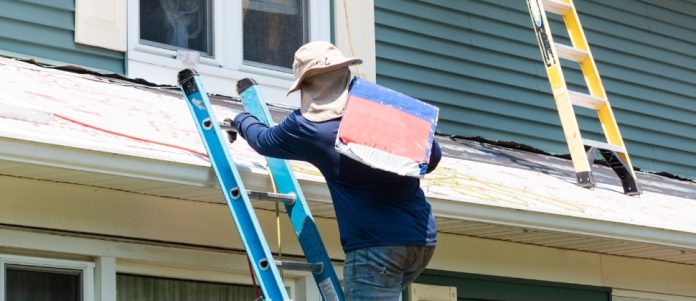Owning a small business often means wearing many hats, and one crucial aspect that shouldn’t be overlooked is the maintenance of your commercial roof. A well-maintained roof is essential for protecting your business premises and assets. While professional Commercial Roofing Services play a vital role, there are also several do-it-yourself (DIY) maintenance tips that small business owners can implement to ensure the longevity of their commercial roofs. In this comprehensive guide, we’ll explore practical DIY strategies and Best Roofers practices to keep your commercial roof in top condition.
1. Regular Roof Inspections
Regular roof inspections are the cornerstone of effective commercial roof maintenance. Set up a program to examine your roof at least twice a year, preferably in the spring and fall. During these inspections, look for signs of damage, wear, or potential issues such as leaks or loose materials. Pay attention to areas around vents, skylights, and any protrusions through the roof.
Identifying problems early allows you to address them promptly, preventing more extensive and costly damage. If you’re unsure about what to look for, consider hiring Commercial Roofing Contractors for an initial assessment and guidance on key inspection points.
2. Clean Gutters and Drains
Proper drainage is crucial for the health of your commercial roof. Leaves, debris, and dirt can accumulate in gutters and drains, causing water to pool and potentially leading to leaks. Regularly clean gutters and drains to ensure proper water flow.
Use a sturdy ladder to access gutters and remove debris by hand or with a specialized tool. Flush the gutters and drains with water to clear any remaining particles. This simple DIY maintenance task goes a long way in preventing water-related issues that could compromise your commercial roof.
3. Trim Overhanging Branches
Overhanging branches pose a threat to your commercial roof, especially during storms or strong winds. Trim branches that are too close to or hanging over the roof to prevent them from causing damage. Falling branches can puncture the roof membrane or damage roofing materials, leading to potential leaks and structural issues.
If the tree is near your business premises, consider consulting with professional arborists or tree services to safely trim or remove branches. Regular tree maintenance is a proactive measure that contributes to the overall health and safety of your commercial roof.
4. Seal Any Leaks Promptly
If you discover any leaks during your roof inspections, it’s crucial to address them promptly. Leaks, even small ones, can lead to extensive damage over time. Begin by identifying the source of the leak and assess the severity. Common culprits include damaged flashing, cracked seals, or deteriorated roofing materials.
For small leaks, you can use commercial roof sealants to patch the affected areas. Prior to applying the sealant, ensure that the surface is clean and dry. However, for larger or more complex issues, it’s advisable to consult with Commercial Roofing Contractors Near Me for professional assistance.
5. Inspect and Maintain Roof Flashing
Flashing is a critical component of any commercial roof, providing protection at vulnerable areas such as roof edges, corners, and transitions. Over time, flashing can degrade, leading to leaks and water infiltration. During your roof inspections, pay close attention to the condition of flashing.
If you notice any signs of damage or deterioration, such as rust or bent sections, address them promptly. Replace damaged flashing to maintain the integrity of your commercial roof. Properly installed and maintained flashing is key to preventing water intrusion and ensuring the long-term performance of your roofing system.
6. Address Ponding Water Issues
Ponding water, or water that remains on the roof surface for an extended period, can be a common issue for flat or low-slope commercial roofs. Ponding water adds unnecessary weight and increases the risk of leaks. During your roof inspections, identify areas where water tends to accumulate.
If you notice ponding water, investigate the underlying causes. It could be due to improper drainage or a sagging roof structure. Correcting these issues may involve adjusting the roof slope, clearing debris from drains, or installing additional drainage solutions. Addressing ponding water proactively helps prevent structural damage and extends the life of your commercial roof.
Conclusion
DIY maintenance for small businesses with commercial roofs is a proactive approach that can save both time and money in the long run. Regular roof inspections, cleaning gutters and drains, trimming overhanging branches, promptly sealing leaks, inspecting and maintaining roof flashing, and addressing ponding water issues are essential practices for ensuring the health and longevity of your commercial roof.
While these tips can be implemented by small business owners, it’s important to recognize the value of professional Commercial Roofing Services. Regular consultations with experienced Commercial Roofing Contractors Near You can provide additional insights, identify potential issues early on, and ensure that your commercial roof receives the best care possible. By combining DIY efforts with professional expertise, you can create a robust maintenance strategy that protects your business premises and investments for years to come.








